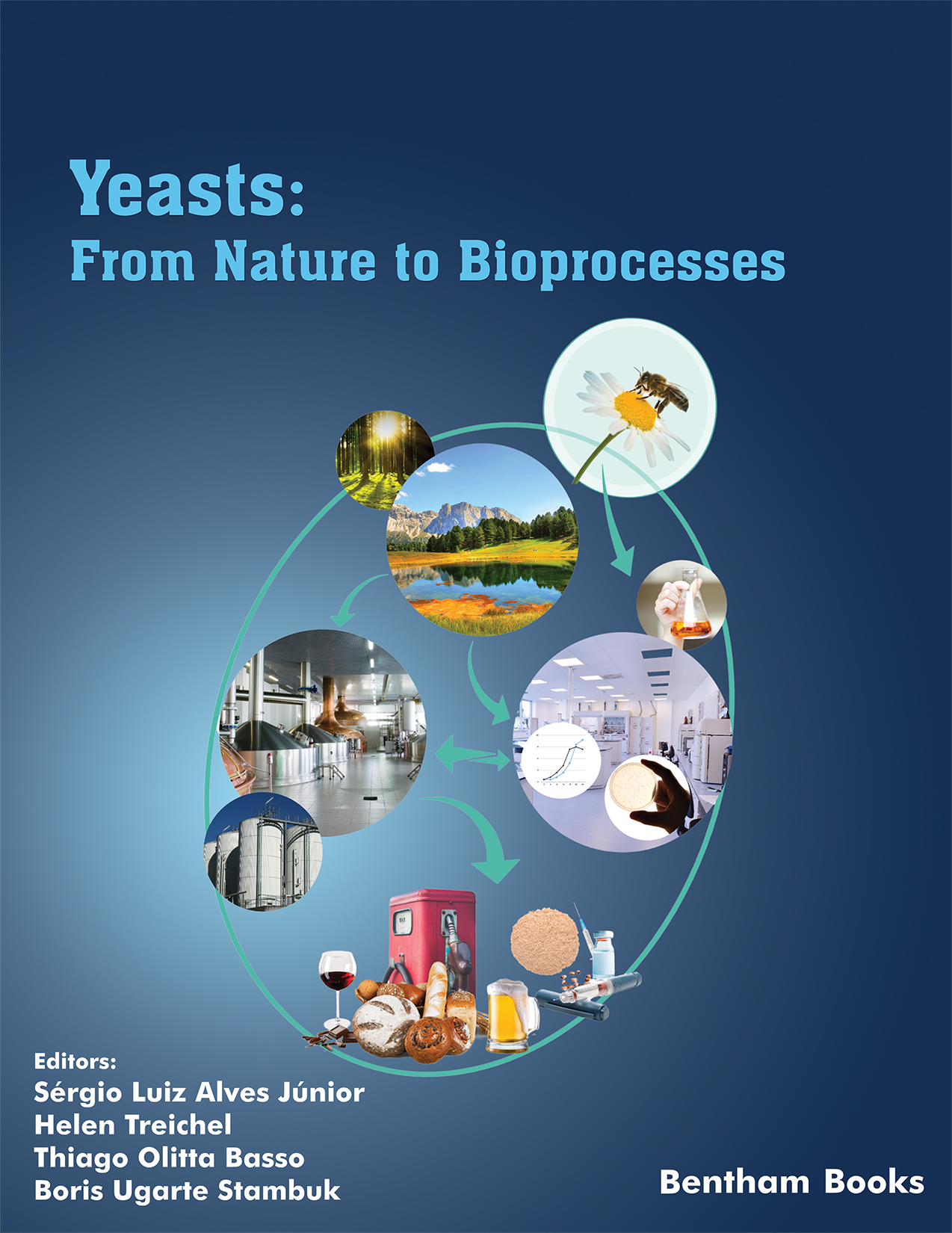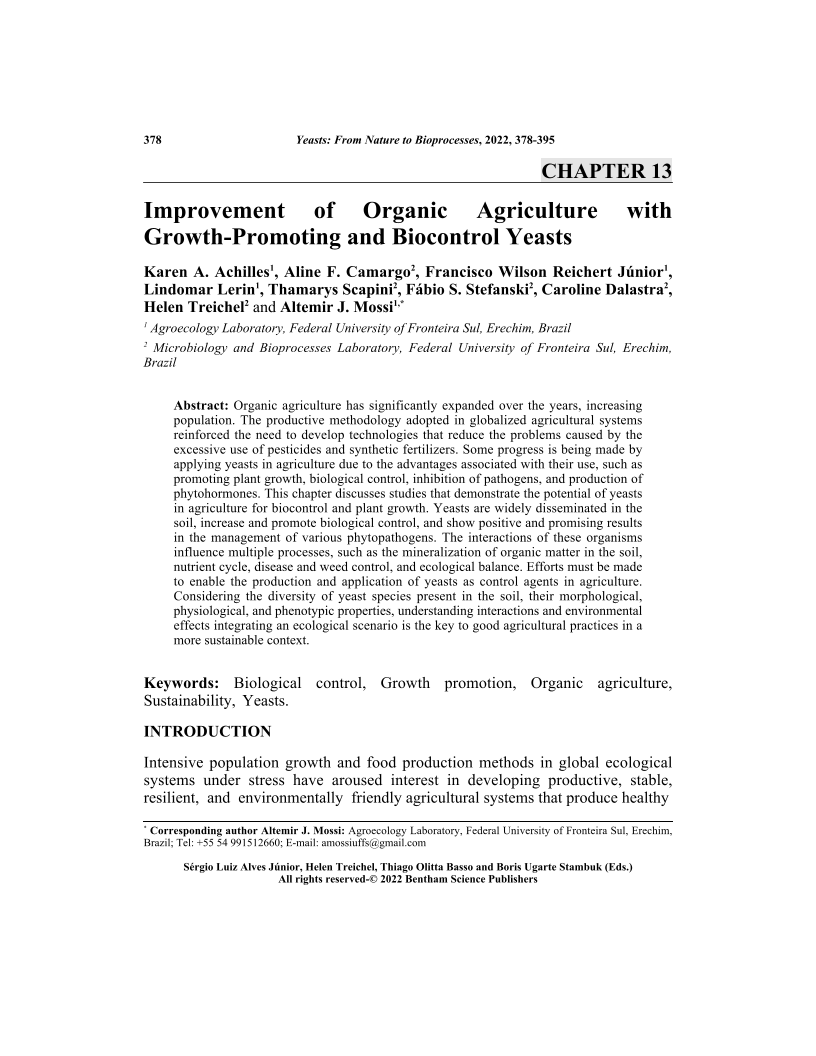Improvement of Organic Agriculture with Growth-Promoting and Biocontrol Yeasts

- Authors: Karen A. Achilles1, Aline F. Camargo2, Francisco Wilson Reichert Júnior3, Lindomar Lerin4, Thamarys Scapini5, Fábio S. Stefanski6, Caroline Dalastra7, Helen Treichel8, Altemir J. Mossi9
-
View Affiliations Hide Affiliations1 Agroecology Laboratory, Federal University of Fronteira Sul, Erechim, Brazil 2 Microbiology and Bioprocesses Laboratory, Federal University of Fronteira Sul, Erechim, Brazil 3 Agroecology Laboratory, Federal University of Fronteira Sul, Erechim, Brazil 4 Agroecology Laboratory, Federal University of Fronteira Sul, Erechim, Brazil 5 Microbiology and Bioprocesses Laboratory, Federal University of Fronteira Sul, Erechim, Brazil 6 Microbiology and Bioprocesses Laboratory, Federal University of Fronteira Sul, Erechim, Brazil 7 Microbiology and Bioprocesses Laboratory, Federal University of Fronteira Sul, Erechim, Brazil 8 Microbiology and Bioprocesses Laboratory, Federal University of Fronteira Sul, Erechim, Brazil 9 Agroecology Laboratory, Federal University of Fronteira Sul, Erechim, Brazil
- Source: Yeasts: From Nature to Bioprocesses , pp 378-395
- Publication Date: March 2022
- Language: English
Improvement of Organic Agriculture with Growth-Promoting and Biocontrol Yeasts, Page 1 of 1
< Previous page | Next page > /docserver/preview/fulltext/9789815051063/chap13-1.gif
Organic agriculture has significantly expanded over the years, increasing population. The productive methodology adopted in globalized agricultural systems reinforced the need to develop technologies that reduce the problems caused by the excessive use of pesticides and synthetic fertilizers. Some progress is being made by applying yeasts in agriculture due to the advantages associated with their use, such as promoting plant growth, biological control, inhibition of pathogens, and production of phytohormones. This chapter discusses studies that demonstrate the potential of yeasts in agriculture for biocontrol and plant growth. Yeasts are widely disseminated in the soil, increase and promote biological control, and show positive and promising results in the management of various phytopathogens. The interactions of these organisms influence multiple processes, such as the mineralization of organic matter in the soil, nutrient cycle, disease and weed control, and ecological balance. Efforts must be made to enable the production and application of yeasts as control agents in agriculture. Considering the diversity of yeast species present in the soil, their morphological, physiological, and phenotypic properties, understanding interactions and environmental effects integrating an ecological scenario is the key to good agricultural practices in a more sustainable context.
-
From This Site
/content/books/9789815051063.chap13dcterms_subject,pub_keyword-contentType:Journal -contentType:Figure -contentType:Table -contentType:SupplementaryData105

